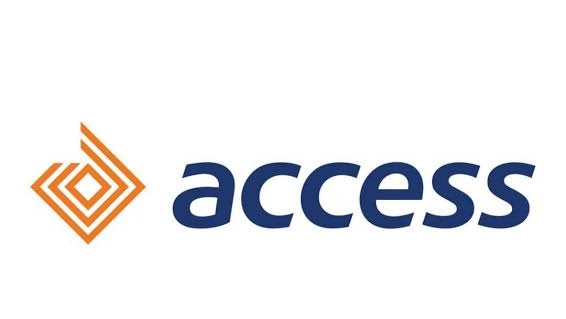- Search for topics or project materials by department. 2015/2016 Research Work 46 ARCHITECTURE 12 Accounting 158 Agriculture & Farming 21 Arts and Crafts 25 BIOCHEMISTRY 30 Bank & Finance 45 Biology 1 Business Administration 162 CHEMICAL ENGINEERING 18 Career People 18 Computer Science 0 Computer Science 244 Computer Science E-books 0 ECONOMICS 117 EDUCATION 78 ELECTRICAL ELECTRONICS 88 ENGLISH 14 ESTATE MANAGEMENT 16 Electrical Electronics 0 Food 19 Forum 0 General Topics 4 HOSPITALITY & TOURISM 123 Import & Export 10 Land Survey & Geoinformatics 68 Law 7 MARKETING 37 Marketing & Advertising 11 Mass communication 155 Masters and Doctorate 118 Mechanical Engineering books 0 Media & Publishing 6 Medical Science E-books 0 Micro Biology 4 Micro Biology 8 OTHERS 0 Oil & Gas 11 Online & Internet 36 POLITICAL SCIENCE 0 Program / Source Code 0 Programming E-books 0 Public Administration 25 Real Estate 20 Religious E-boooks 0 Retail 20 STATISTICS 17 Science Laboratory 0 Science laboratory 56 Sermons & Prophecies Ebook 0 Services 19 Small Scale Manufacturing 21 System Applications 0 Technology 30
THE IMPORTANCE AUDIT REPORT AND ITS IMPACT ON BUSINESS FIRMS
THE IMPORTANCE AUDIT REPORT AND ITS IMPACT ON BUSINESS FIRMSABSTRACT
This research is prompted by one main problem, which is often alleged that audit reports are frequently paramount and this is because firms hoping to be in business needs audit reports and this has impact on the activities of business firm. The objective and concept that guide the present day audit were almost unknown in the early days of the 20th century because the accounting profession responds to the descent of the new business environment. The objective of independent auditing became during the industrial revolution as business concern grew in size, their owners began to use the services of hired managers with the separation on the ownership and management groups the absentee owner turned increasingly to auditors to protect themselves against the danger of fraud by both managers and employees. Financial accounts of a business was done over a period of time and this is revealed through financial statement based on the records maintained by the employees of the business. Due to the situation above, the company act 1968 deemed it necessary for shareholders to appoint independent professional accountant to examined these financial statement and testify to its fairness and truthfulness. Audit reports which is the end product of an external auditors independent examination on the financial records of a business firm is the subject matter of this study.
TABLE OF CONTENT
Title page
Approval page
Dedication
Acknowledgement
Abstract
Table of content
CHAPTER ONE
Introduction
Background of the study
Statement of the problem
Objectives of the study
Research questions
Significance of the study
Scope and limitations of the study
Definition of the terms
CHAPTER TWO
Literature review
Definition of audit or nature of auditing
Types of auditing
Independence of auditors
Basic content of audit report
scope opinion paragraph
Opinion paragraph
Unqualified opinion
Departure from accounting principle
Emphasis of matters
Qualified opinions
Except for opinions
Subject to opinion
Limitations on scope of examination
Major uncertainty affecting clients business.
Qualification as to accounting procedure and disclosure.
Adverse opinions
Disclaimer opinions
Restrictions imposed by clients.
CHAPTER three
Research methodology
Research design
Sources of data
Population and sample size
Method of investigation
Questionaire method
3.6 Method of statistical Analysis
3.7 Statistical Technique Top Hypothesis
CHAPTER FOUR
Presentation, analysis and interpretation of data
Analysis of data
Analysis of responses from questionnaire.
CHAPTER FIVE
Summary of findings, recommendations and conclusion
Summary of findings
Conclusion
Recommendations
Bibliography
Appendix
View Related Projects
ASSESSING THE IMPACT OF AUDITORS INDEPENDENCE ON INTERNAL CONTROL – A SURVEY OF THREE MANUFACTURING FIRMS IN RIVERS STATE
ABSTRACTThis research study was aimed at critically assessing the statutory auditors independence on internal contr...
Continue readingEFFECTIVENESS OF INVENTORY MANAGEMENT IN A MANUFACTURING COMPANY (A CASE STUDY OF AMA GREENFIELD BREWERIES PLC, ENUGU, NIGERIA)
ABSTRACTThis study examines the essence of effective inventories control and management to manufacturing companies with...
Continue readingTHE IMPACT OF INTERNAL CONTROL SYSTEM ON REVENUE GENERATION: CASE STUDY OF POWER HOLDING COMPANY OF NIGERIA (P.H.C.N) OKPARA AVENUE ENUGU
ABSTRACTThe objective of this study was to evaluate the internal control system in operation at power holding com...
Continue reading

